During the 1931 season, the Empress of Britain made nine round trips between Southampton and Quebec. For its last westbound trip of the season, however, it headed straight to New York, where it was prepared for its first world cruise. This cruise departed New York on December 3 and returned on April 8, thus lasting 127 days — a full ten days less than the 1930-31 cruise.
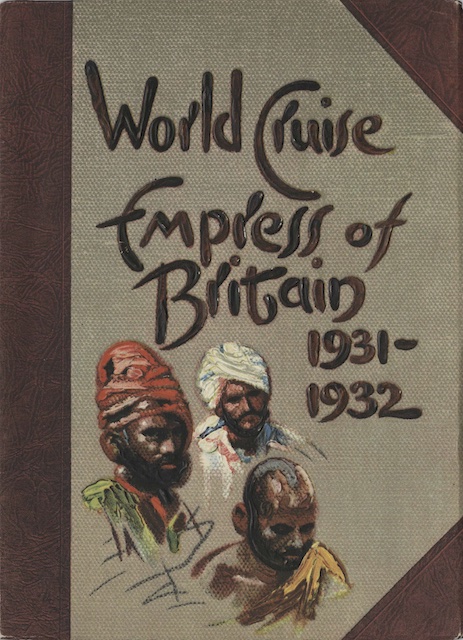 Artwork in the 1931-32 world cruise booklet includes black-and-white versions of the Frederick Griffin paintings in the Empress of Britain booklet shown yesterday combined with what appears to be Gillespie/Greenwood drawings and paintings of people in some of the cruise’s exotic destinations. Click image to view and download a 56.9-MB PDF of this 66-page booklet from the University of British Columbia Chung collection.
Artwork in the 1931-32 world cruise booklet includes black-and-white versions of the Frederick Griffin paintings in the Empress of Britain booklet shown yesterday combined with what appears to be Gillespie/Greenwood drawings and paintings of people in some of the cruise’s exotic destinations. Click image to view and download a 56.9-MB PDF of this 66-page booklet from the University of British Columbia Chung collection.
When reconfigured as a cruise ship, in which all rooms were effectively first class, it had a capacity of 641 passengers. Despite the shorter cruise, fares were advertised as starting at $2,000 per person, the same as the previous year.
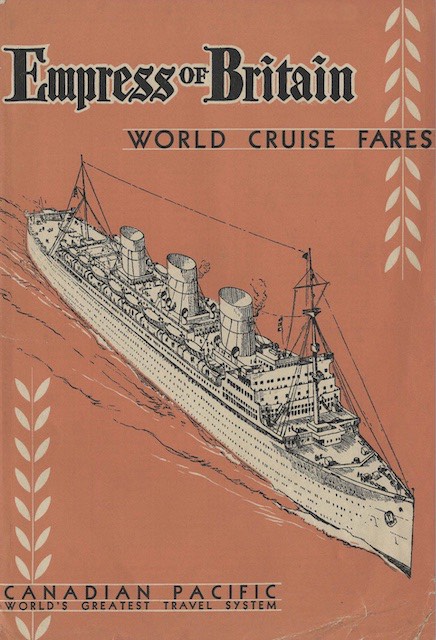 Fares on the 1931-32 cruise ranged from $2,000 to $13,000 per person (US$40,000 to US$255,000 in today’s dollars). Click image to view and download a 4.2-MB PDF of this brochure from the University of British Columbia Chung collection.
Fares on the 1931-32 cruise ranged from $2,000 to $13,000 per person (US$40,000 to US$255,000 in today’s dollars). Click image to view and download a 4.2-MB PDF of this brochure from the University of British Columbia Chung collection.
In fact, only four rooms on the entire ship were available for that price, compared with 26 on the Empress of Australia. Some of Australia’s lowest-priced rooms were singles, while all four on the Britain were doubles, so someone traveling alone would have to pay a minimum of $2,150.
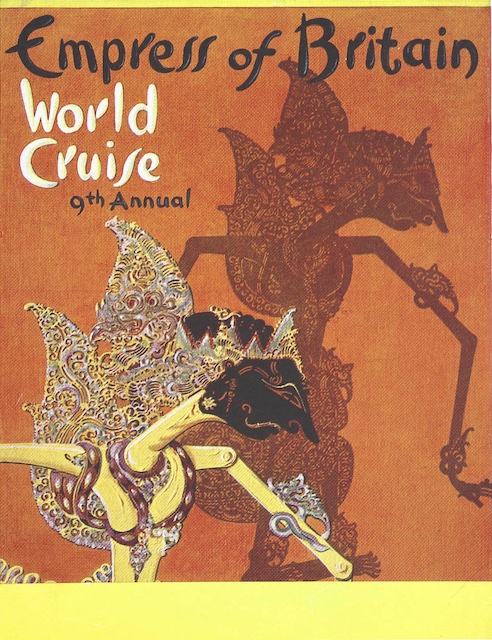 The cover of this brochure features a Javanese shadow puppet. Inside, the brochure has some of the color paintings from the Empress of Britain booklet plus a full-color deck plan. Click image to view and download a 6.7-MB PDF of this brochure from the University of British Columbia Chung collection.
The cover of this brochure features a Javanese shadow puppet. Inside, the brochure has some of the color paintings from the Empress of Britain booklet plus a full-color deck plan. Click image to view and download a 6.7-MB PDF of this brochure from the University of British Columbia Chung collection.
In the 1920s, this might not have been important to the high-rollers who could afford these world cruises, but apparently the Depression made it so. If Canadian Pacific had managed to sell all of the rooms on this cruise, it would have earned close to $2.8 million or an average of more than $4,300 per person. As it was, the ship was less than 60 percent full and earned only $1.3 million or an average of $3,400 per person. This is partly because not everyone on the cruise went the entire distance, but it is also likely that the rooms that were sold tilted to the low end of the cost scale. Despite carrying only 379 passengers out of a potential 641, the ship still required its full complement of 649 crew members.
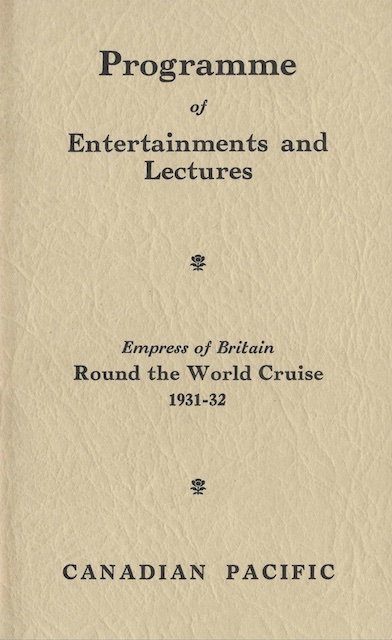 This brochure has some of the paintings from the Empress of Britain booklet in full color as well as a full-color deck plan. Click image to view and download a 1.5-MB PDF of this brochure from the University of British Columbia Chung collection.
This brochure has some of the paintings from the Empress of Britain booklet in full color as well as a full-color deck plan. Click image to view and download a 1.5-MB PDF of this brochure from the University of British Columbia Chung collection.
During the cruise, passengers were entertained with a variety of dances, concerts, movies, and lectures about the places they would visit. These are listed in the program above.
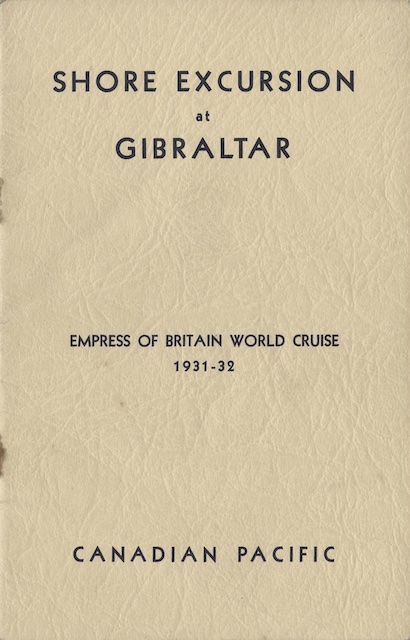 Click image to view and download a 3.0-MB PDF of this booklet from the University of British Columbia Chung collection.
Click image to view and download a 3.0-MB PDF of this booklet from the University of British Columbia Chung collection.
At each of the major ports, Canadian Pacific provided passengers with a booklet describing the excursions that were available as a part of the fares. The one for Gibralter is above; the Chung collection has similar booklets for Algiers, Monaco, India, Ceylon, Padang, Java, Bangkok, Manila, Hong Kong, Peiping, Hawaii, and Panama.
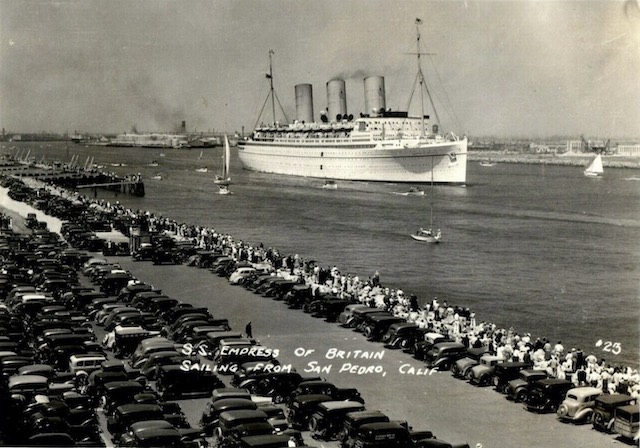 Click image to download a 1.0-MB PDF of this postcard.
Click image to download a 1.0-MB PDF of this postcard.
The Empress of Britain attracted attention wherever it went. In the real photo postcard above, hundreds of people line the shore to watch a dozen small craft escort the empress, the largest ocean liner to visit Los Angeles up to that time, as it leaves San Pedro Harbor.
